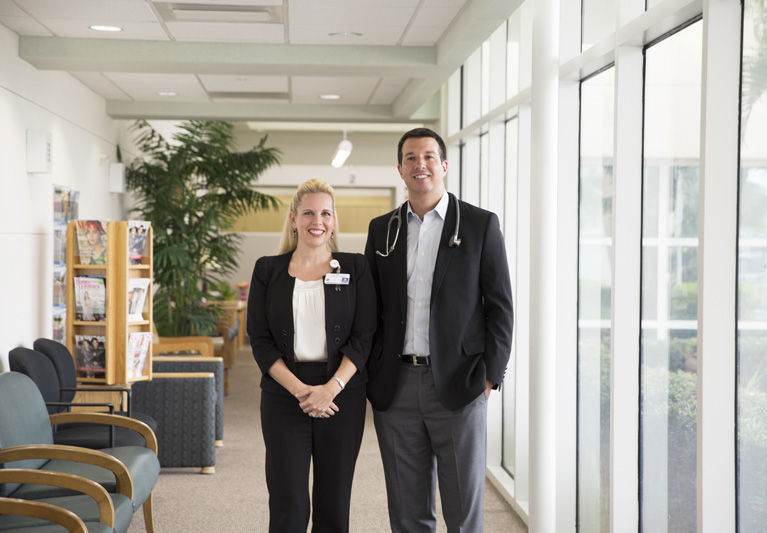
The Sebastian River Medical Center has made a major change in its day-to-day operations, ending a decade-long association with EmCare, the nation’s largest provider of emergency and hospital staffing services, and contracting instead with the Schumacher Group, the country’s third largest firm in that field, to manage both its in-hospital care and its emergency department.
Kelly Enriquez, chief executive officer of the Sebastian hospital, says she’s confident the changes will be popular with SRMC’s patients and staff members.
Hospital staffing service companies are a lesser-known but integral part of today’s healthcare system. While they generate billions of dollars in revenue annually, their self-stated mission is to streamline hospital procedures, control costs, eliminate redundancies and improve patient outcomes.
Thousands of U.S. hospitals “farm out” to these firms the management of high-profile services such as emergency room operations and in-hospital care.
Schumaker’s senior vice president of medical affairs, Dr. Dean Dalili, explains: “Most hospitals do farm-out management of ER hospital medicine because when you do this on a much larger scale – like our company does – there’s an economy of scale that allows us to develop better processes, better technology and better resources to improve the function of the healthcare team.”
According to Becker’s Hospital Review, four of the most frequently outsourced patient care services are emergency departments, hospitalist staffing, dialysis services and diagnostic imaging.
The demand for these services has led to a once-crowded field of providers getting smaller and smaller as more and more mergers and acquisitions take place within the industry.
Just this past August, for example, Schumacher completed a merger with Hospital Physician Partners of Hollywood, Fla., a company roughly half Schumacher’s size. Dozens of similar transactions occur each year.
EmCare currently contracts with over 1,000 hospitals in 42 states. The second largest provider, TeamHealth, is employed by some 860 hospitals in 46 states while Schumacher, the nation’s third largest provider after its merger with HPP, serves around 358 hospitals in 29 states.
Together those three companies now serve roughly 40 percent of the 5,600 registered hospitals in the country.
Dalili points out that it can be difficult and often prohibitively expensive for individual hospitals to find and employ local managers with the clinical expertise needed to drive these services, let alone have access to the massive data bases these larger companies use to help hold down costs and monitor patient outcomes.
The first prong of the EmCare-to-Schumacher changeover at SMRC came in January when Dalili, a Vero Beach resident, took over the reins of in-hospital care at SRMC as its new medical director.
The month after its takeover of in-patient services, Schumacher assumed control of SRMC emergency room operations.
Enriquez, who served as the Sebastian facility’s director of physician outreach, assistant administrator and chief operating officer prior to being named CEO, minces no words about the changeover. “We’re exceptionally happy with the decision we made,” she exclaims.
That’s an enthusiastic endorsement given the short time Schumacher has been in charge of those two high-profile areas, but Dalili claims both response times in the emergency room and the time it takes to have patients admitted to the hospital have been “reduced pretty significantly” since the January transition.
Since Medicare had already rated SRMC’s emergency room response times as being faster than 80 percent of Florida’s other hospitals, Dalili’s claim is impressive and it is echoed by Enriquez.
“Our ER metrics,” Enriquez boasts with a smile, “continue to thrive and even more so since we got Schumacher onboard.”
Dalili, meanwhile, says he is keenly aware that this area of Florida has its own anomalies that hospitals in other areas rarely face.
For starters, he says, “there’s a lot of seasonality to the population,” and that can make determining the optimum staffing levels difficult.
Additionally, the aging demographic of the Treasure Coast means there are more chronic medical issues to manage than there are in other areas of the country but those obstacles don’t seem to worry Dalili or Enriquez.
The results so far, according to Enriquez, “have been overwhelmingly positive.”
The changes in ER and in-hospital services will not, according to both Enriquez and Dalili, impact a patient’s ability to see or be treated by their local physician or specialist.



